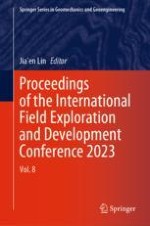2024 | OriginalPaper | Chapter
Influencing Factor and Frac-Hit Prevention Countermeasures in Fractured Shale Gas Reservoirs
Authors : Hua-lei Xu, Hou-shun Jiang, Liang-jun Zhang, Jie Wang
Published in: Proceedings of the International Field Exploration and Development Conference 2023
Publisher: Springer Nature Singapore
Activate our intelligent search to find suitable subject content or patents.
Select sections of text to find matching patents with Artificial Intelligence. powered by
Select sections of text to find additional relevant content using AI-assisted search. powered by
